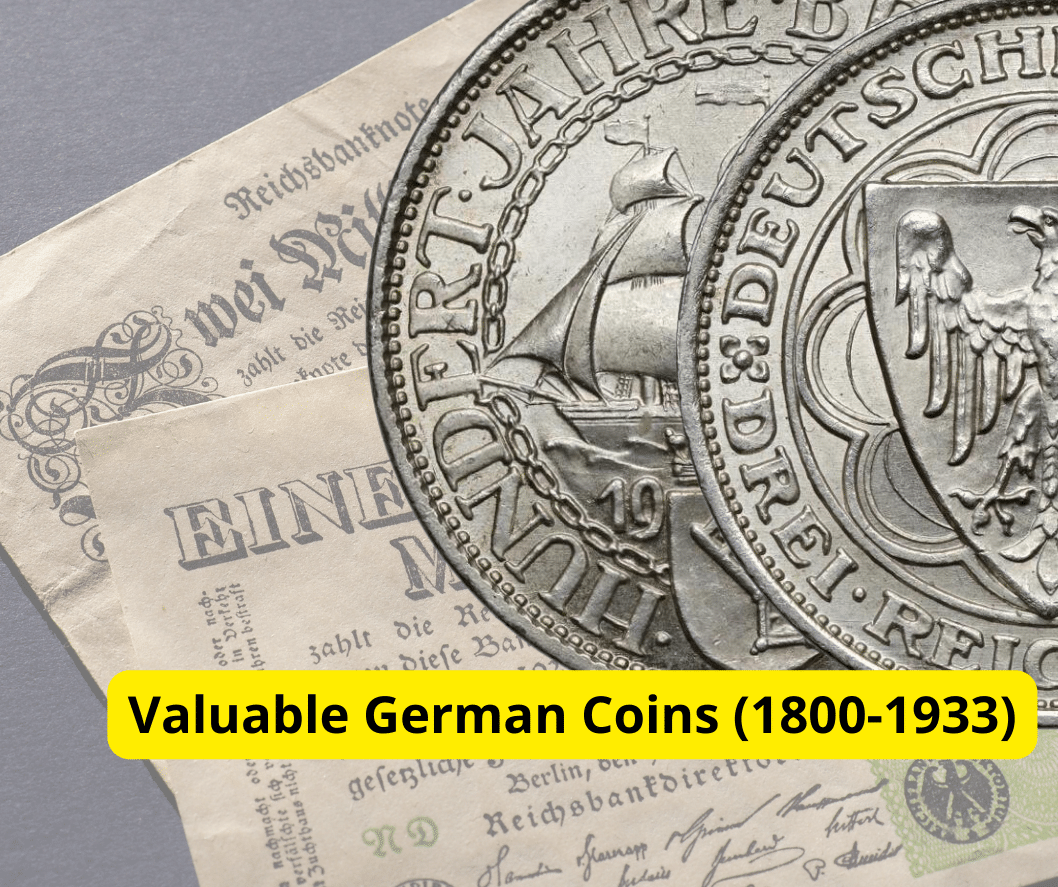The value of German coins listed in an online price guide.
Old German coins from the 19th century have become sought-after collectibles worldwide. This can be attributed to their varied designs, which owe to the structure of Germany during that era when it was made up of a multitude of German territories. Each territory was endowed with a measure of autonomy and generated its own mints in major cities, a tradition that had begun back in the Middle Ages and earlier. Not only are these coins attractive to collectors, they also serve as stable investments.

Collectors appreciate German coins for their prevalence in circulation throughout the 19th century. These coins, issued from German territories and later from the German Empire, were created in massive numbers and many remain today. In the early 1800s following the Napoleonic Wars, a unified nation of German principalities and kingdom was established until 1871 when Germany was reformulated as the German Empire. This period was an important time for growth in Germany. Coins with the inscription «Deutsche Reich Coins» were created during this time frame to stand for national unification. In the early 1900s, Germany had an incredibly thriving economy, outranking many other European nations. These corresponded to 10 and 20 mark gold coins that were produced extensively from superior quality gold, in various mints all across the German Empire. The coins all had the same mass, measurement and design on the front, but the back of the coins differed. Today, these gold coins are often seen at auctions and are among the most sought-after European coins from the 19th century. The ability of very few countries at that time to circulate such a large number of gold coins is a testament to the economic power of the Reich.
After losing in World War I, the German Empire was replaced by the Weimar Republic, which lasted from 1919 to 1933. The country faced a number of hardships in the years following WWI and the 1929 economic crisis, effects of which were made apparent in the coins minted during the Weimar Republic. These silver coins contained additions of up to 50% nickel and copper, making them much cheaper than coins made of precious metals. They possess high artistic and historical value which more than makes up for their metal cost, thus making them quite valuable.
German coins are an established part of the numismatic market in the U.S. due to a combination of immigration, veterans of the European War, troops stationed in the former West Germany, and tourists. Evaluating foreign antique coins requires a great deal of skill and expertise, and analyzing German coins is especially difficult. Research resources and reliable data concerning the worth of these coins are limited, creating one of the most daunting issues for collectors: how to ascertain the worth of their coins. So, a practical and dependable solution is needed.
Coinstrail.com can provide an answer to this issue — they offer the exact and updated prices of German coins based on their status, distinctiveness, and historical importance. As a result, coin collectors can figure out the genuine worth of their foreign coins with absolute trust and conviction.
The platform Coinstrail.com has more functions than just calculating the worth of coins. It also has a wide variety of images of both German and other European coins, making it possible to verify and distinguish coins from each other. This makes the process of assessing coins painless and unfussy.
Someone with a hobby for collecting coins from Germany can find aid through Coinstrail to authenticate their possessions and learn the precise worth of each piece. Not only that, but Coinstrail can also provide useful information regarding the historical context of the coins. Having access to all this online and in one place is beneficial to any collector.